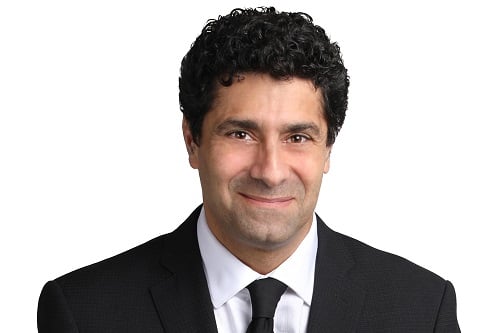Branch manager Ron Haik on why he’s long been an admirer – and unashamed imitator – of his new firm’s wealth management approach

Ron Haik admitted he was a disciple of John Nicola’s approach to managing wealth long before he started working for him.
More than a decade ago, Haik sat in a speech by his now employer – then competitor - and was impressed to such a degree he remodelled his business at CDSPI on the same principles for the next 11 years.
If imitation is the greatest form of flattery, Nicola Wealth Management's new senior financial planner and Ontario regional manager makes no bones about the fact he took it to the next level, co-opting many of the firm's best practices.
With that in mind, it’s no surprise to hear the excitement in his voice when he speaks to WP about spearheading the $6 billion company’s expansion from its Vancouver HQ into the lucrative high-net-worth Ontario market.
Haik is clear about the clients he wants to attract: those with a minimum of $1 million in investable assets with complex needs. He said: “We have the people and we have solutions to deliver [clients] piece of mind.”
Four months into his new job, he's focused on getting brand awareness across the province and taking steps to build his office to a $3 billion operation. To do that, he's grabbing the metaphorical megaphone and shouting from the rooftops.
As well as the combination of planning and solutions that Nicola offers – of which alternative assets are fundamental – there’s also the issue of transparency, an aspect the company embraces.
He said: “You can go to any wealth management website today - and I've done the work - no other firm has the full fee schedule and full results after fees posted, as well as what they are invested in. My philosophy is if you are really great at what you do, why wouldn’t you want everyone to know about it?”
Another core part of the philosophy is tied to cash flows and alternative assets like real estate, which he believes should be the cornerstone of any investment portfolio, helping to mitigate volatility and improve long-term returns. It’s an approach, he said, that goes beyond the traditional stocks-and-bond model.
He said: “We approach it as the Canadian Pension Plan might, including alternative assets like real estate. In the last quarter of 2018, we saw direct correlation between two asset classes that most people invest in - fixed income and public equity markets.
“When you think about other alternative assets such as real estate, when you have a strong real estate portfolio cash flow, the value of the real estate is a secondary item to consider. I believe last year our cash flow provided 4.8% on our core portfolio. If you procure that kind of cash flow consistently then most clients aren’t going to have to draw down on their principle in order to live.”
Haik also emphasized that the approach to high-net-worth clients is similar to a new investor with $100,000 except for the complexity. But he warned there is no cookie-cutter solution for wealthy clients.
An example may be RRSP season, where the traditional model is to save and save and then, after turning 71, turn it into a RRIF and start withdrawing.
He explained: “For clients with the complexity we might have, they may have a corporate account so it might be a different solution. They may stop drawing a salary out of their corporate account the last five years before they turn 71 and work that salary income from their RRSP.
“That’ll bring down your RRSP balance and grow your corporate balance so you have greater flexibility in terms of timing and the types of investment you make and how you share that with family members, if appropriate.”
Follow WP on Facebook, LinkedIn and Twitter



